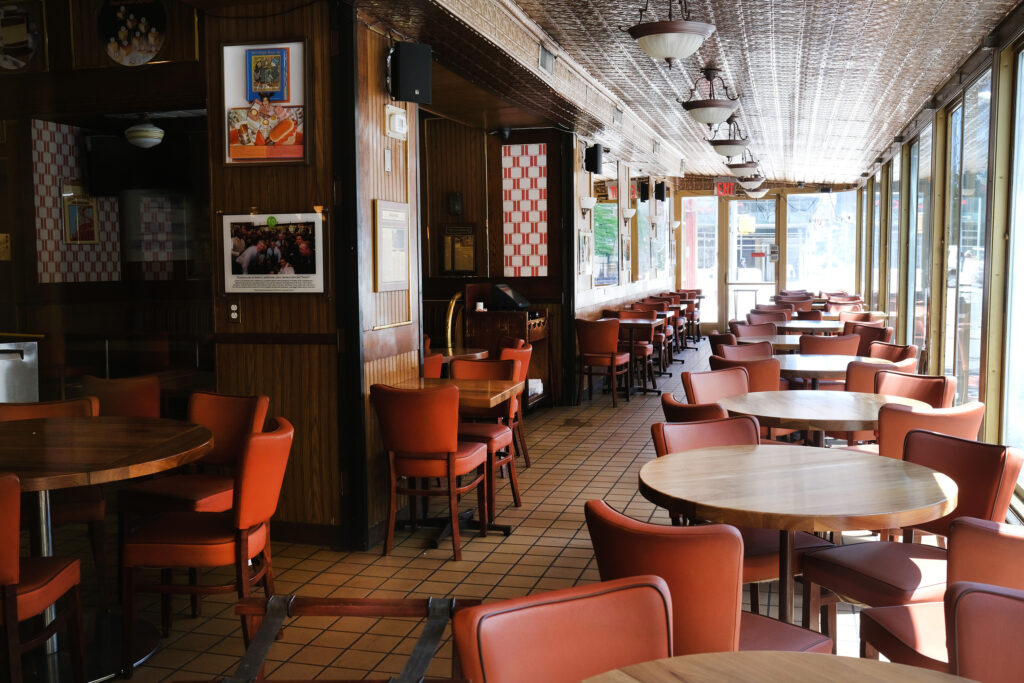
(CNN) — It’s never been easy to operate a restaurant, and in recent years it’s been even harder.
In 2020, Covid restrictions ground the nation’s bustling restaurant industry to a halt. Since then, there have been significant signs of a rebound: Dining rooms have reopened and customers have returned to cafes, fine-dining establishments and fast food joints.
But there are fewer US restaurants today than in 2019. It’s not clear when —if ever — they’re coming back.
Last year, there were about 631,000 restaurants in the United States, according to data from Technomic, a restaurant research firm. That’s roughly 72,000 fewer than in 2019, when there were 703,000 restaurants in the country.
That number could fall even further this year, to about 630,000 locations, according to Technomic, which doesn’t foresee the number of restaurants in the US returning to pre-Covid levels even by 2026.
Sit-down restaurants, especially, are at a disadvantage as delivery and takeout remain popular. And with inflation still high, some potential customers are avoiding restaurants to save money. Meanwhile, restaurant operators are seeing their own costs, like rent and ingredients, rise, and say it’s hard to hire staff.
With conditions so tough, some restaurant owners are advising newcomers to steer clear of the industry altogether.
If someone were to ask David Nayfeld, chef and co-owner of the San Francisco restaurants Che Fico and Che Fico Alimentari, whether to open a new restaurant right now, his answer would be no.
“I would say it is not a good time to go open a restaurant if you are not a seasoned and incredibly durable operator,” he said. Especially now, when restaurant operators need experience and deep pockets in order to succeed, he added.
Even Nayfeld, himself an industry veteran who has worked at the famed Eleven Madison Park, is struggling. The pandemic led to “a really devastating few years that we’re still working our way out of,” he said.
Calling it
Some have argued that the contraction is a painful but necessary correction.
“The narrative back pre-pandemic was that we were over-saturated … too many restaurants chasing too few consumer dollars,” said David Henkes, senior principal at Technomic.
Indeed, before the pandemic, the number of restaurants was growing between half a percent and one percent each year, he said, adding that the recent decline served to “reset” the size of the market. Without those hurdles, however, that decrease would likely have happened more slowly, he noted.
Daniel Jacobs, a chef and restaurant owner, has seen his own network of restaurants shrink over the past few years.
Prior to the pandemic, he and his business partner Dan Van Rite operated three restaurants and a bakery, plus a catering operation and restaurant consulting business. Today, they are left with two Milwaukee restaurants, DanDan and EsterEv.
“Closing a restaurant is an incredibly difficult decision to make,” Jacobs said. “We did our best during the pandemic to try and keep our teams together … at some point, you just gotta call it.”
The rise of takeout and delivery during the pandemic helped multiple restaurants survive the pandemic.
DanDan, a Chinese American restaurant, had offered takeout for years. The restaurant “had that customer confidence that we were going to deliver quality products,” he said.
EsterEv is a tasting-menu-only restaurant within a restaurant (functionally, a dining room located inside DanDan) open only on weekends, and “definitely wouldn’t have [made it] if we had to pay rent on a space,” Jacobs said.
To stay or to go?
The trend toward delivery and takeout has stuck, with restaurants reporting higher levels of off-premise orders. According to Revenue Management Solutions, a restaurant consultancy, delivery was up 11.4% in fast food and fast casual restaurants in January compared to last year.
“We increasingly like to get our food on the go,” said David Portalatin, food service industry advisor for the NPD Group, a market research firm. “We’re still a more home-centric society.”
Plus, sit-down restaurants tend to be more expensive, which could drive cash-strapped customers away, said Portalatin. Even with rising grocery prices, eating at home is generally less expensive than dining out, and restaurants last year saw their foot traffic dip.
Full-service restaurants are also more labor intensive. That’s a problem right now, as restaurant owners report having a hard time hiring staff.
Help wanted
Job openings in accommodation and food services rose by 409,000 in December, the largest increase by sector for the month, the Bureau of Labor Statistics said in February.
Demand for workers marks a turnaround from early in the pandemic, when restaurants let go of millions of staffers. Some employees also left of their own volition during the pandemic, afraid of getting sick with Covid-19 or tired of dealing with grueling conditions and rude customers.
Today, some of those workers haven’t returned, leaving operators struggling to restaff.
“Fundamentally, the labor situation is one where … there’s just not enough supply of qualified workers,” Henkes said. “And restaurants are particularly vulnerable, because it’s never been the industry of choice for a lot of people.”
Some restaurants, Henkes said, “are very cognizant that they need to improve the working experience and what they’re offering to employees,” he said. “But doing that at scale for an industry is very hard.”
And, of course, some major employers are not interested in higher wages for workers.
Chipotle, Starbucks, Chick-fil-A, McDonald’s and KFC-owner Yum Brands, for example, have each donated $1 million to Save Local Restaurants, a coalition opposing a California law that could set minimum wage up to $22 an hour and codify working conditions for fast-food employees in the state.
The-CNN-Wire
™ & © 2023 Cable News Network, Inc., a Warner Bros. Discovery Company. All rights reserved.






